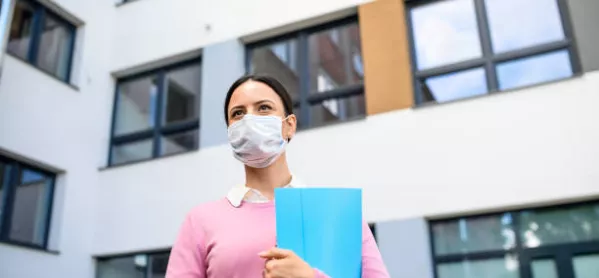Teachers have ‘excess’ Covid risk during lockdown

Teachers have had a “little bit higher risk” of infection with Covid-19 during the national lockdown, new figures suggest.
New data shows that education and childcare staff appear to have had an increased risk of infection during the lockdown compared with people who do not work in these professions.
Scientists have previously said that jobs that are “open” are likely to carry higher rates of infection during this period when other workers have been instructed to stay at home.
News: Huge variation in number of teachers who have had Covid
Union warning: ‘Teachers almost twice as likely to get Covid’
Staff absence: 20,000 teachers off for Covid-related reasons
In January, people who worked in education - including schools, nurseries or childcare - had 20 per cent higher odds of infection compared to those who do not work in these professions.
In February, this rose to 43 per cent, according to data from Imperial College London’s React study which has been analysing data from swab tests taken from people across England since May last year.
To date, more than 1.4 million people have provided swabs so experts can assess infection rates across the country.
The latest round of tests were conducted in February - the second month of the national lockdown - with 165,000 people taking part.
Key workers overall had a 19 per cent increased risk in February.
People who work from home had a decreased risk.
Professor Paul Elliott, director of the React programme and chair of epidemiology and public health medicine at Imperial College London, said: “Teachers are at a bit of excess risk - it’s not just teachers, it’s people working in education, childcare, nursery.
“They’re at a little bit higher risk of infection than people who don’t work in that group of jobs in our data.
“Those who are not mandated to work outside of the home do have a lower risk.
“So that stresses the importance of the work from home where possible.”
Calum Semple, professor of outbreak medicine and child health at the University of Liverpool, told BBC Breakfast on Tuesday: “When you do shut down society, or lock down many different aspects of society but only keep the schools open, then you will see more transmission in schools compared [with] everywhere else because it’s the schools that are working.
“So, if all you’ve got open are your hospitals and your schools, then you will see transmission in your schools because there’s nowhere else for transmission to occur.
“If the only jobs that are open, are the hospitals, and the schools, then yes, teachers will be getting it more than people who are locked down and staying at home.
“But when you open up society and compare more like-for-like activities, the highest risks actually turn out to be people like taxi drivers and people in some retail environments.
“Schoolteachers are not mainly catching it from the children - when we did deep dives into schools, school teachers were catching it from each other in the common room.”
On Tuesday, data from the Office for National Statistics (ONS) suggested that school staff are not at a higher risk of Covid-19 infection than other working-age adults in their local communities.
Around 14.99 per cent of school staff tested positive for coronavirus antibodies in December, which indicate a past infection, lower than the estimate of 18.22 per cent for working-age adults, according to a small study of schools.
Register with Tes and you can read two free articles every month plus you'll have access to our range of award-winning newsletters.
Keep reading with our special offer!
You’ve reached your limit of free articles this month.
- Unlimited access to all Tes magazine content
- Save your favourite articles and gift them to your colleagues
- Exclusive subscriber-only stories
- Over 200,000 archived articles
- Unlimited access to all Tes magazine content
- Save your favourite articles and gift them to your colleagues
- Exclusive subscriber-only stories
- Over 200,000 archived articles



